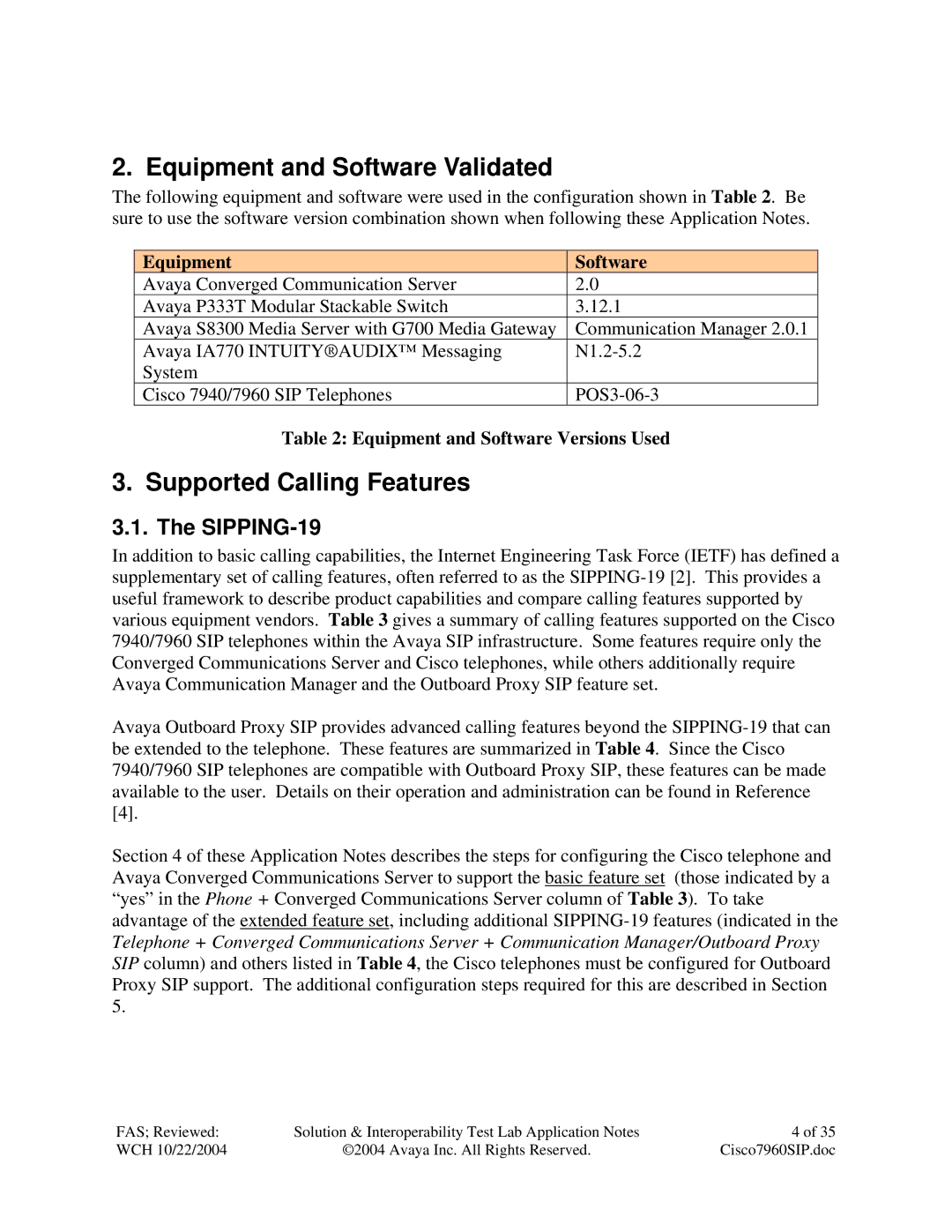7940, 7960 specifications
The Avaya 7960 and Avaya 7940 are popular VoIP (Voice over Internet Protocol) phones known for their robust features and reliable performance in enterprise environments. Both models are designed to facilitate seamless communication within businesses, making them a staple in many corporate phone systems.The Avaya 7960 is a high-end model that comes equipped with a large, backlit LCD display. This display enhances usability by providing clear visibility under various lighting conditions. It features a 6-line display that allows users to see multiple calls and information at once. The 7960 also has programmable buttons, making it easy for users to access frequently dialed numbers and specific functions quickly.
The Avaya 7940, while slightly more basic than the 7960, is still a strong performer with many similar features. It boasts a 2-line display, which is sufficient for users who mainly handle straightforward tasks. The 7940 is a cost-effective option for teams that require essential communication features without the advanced capabilities of the 7960.
Both models support Power over Ethernet (PoE), allowing them to receive power and data through a single network cable. This technology simplifies installation and reduces clutter caused by excess cords. Moreover, both phones are designed to handle multiple lines, supporting features such as call hold, call transfer, and conference calling, which are essential for enhancing workplace productivity.
The Avaya 7960 and 7940 utilize the SIP (Session Initiation Protocol) standard, which ensures compatibility with a variety of VoIP systems and provides flexibility in deployment. They also incorporate high-quality audio technology, delivering clear voice quality during calls, which is critical for effective communication.
Security features in both models, including integrated encryption protocols, protect sensitive data from unauthorized access, making them a safe choice for organizations concerned about confidentiality. Additionally, their user-friendly interfaces and straightforward navigation menus make them accessible for employees of all technical levels.
In conclusion, the Avaya 7960 and 7940 phones are valuable assets for any business looking to enhance its communication infrastructure. With their range of features, support for modern technologies, and emphasis on usability, these phones serve as reliable tools for fostering efficient workplace interactions. Their combination of quality, functionality, and security makes them a preferred choice for many companies worldwide.
